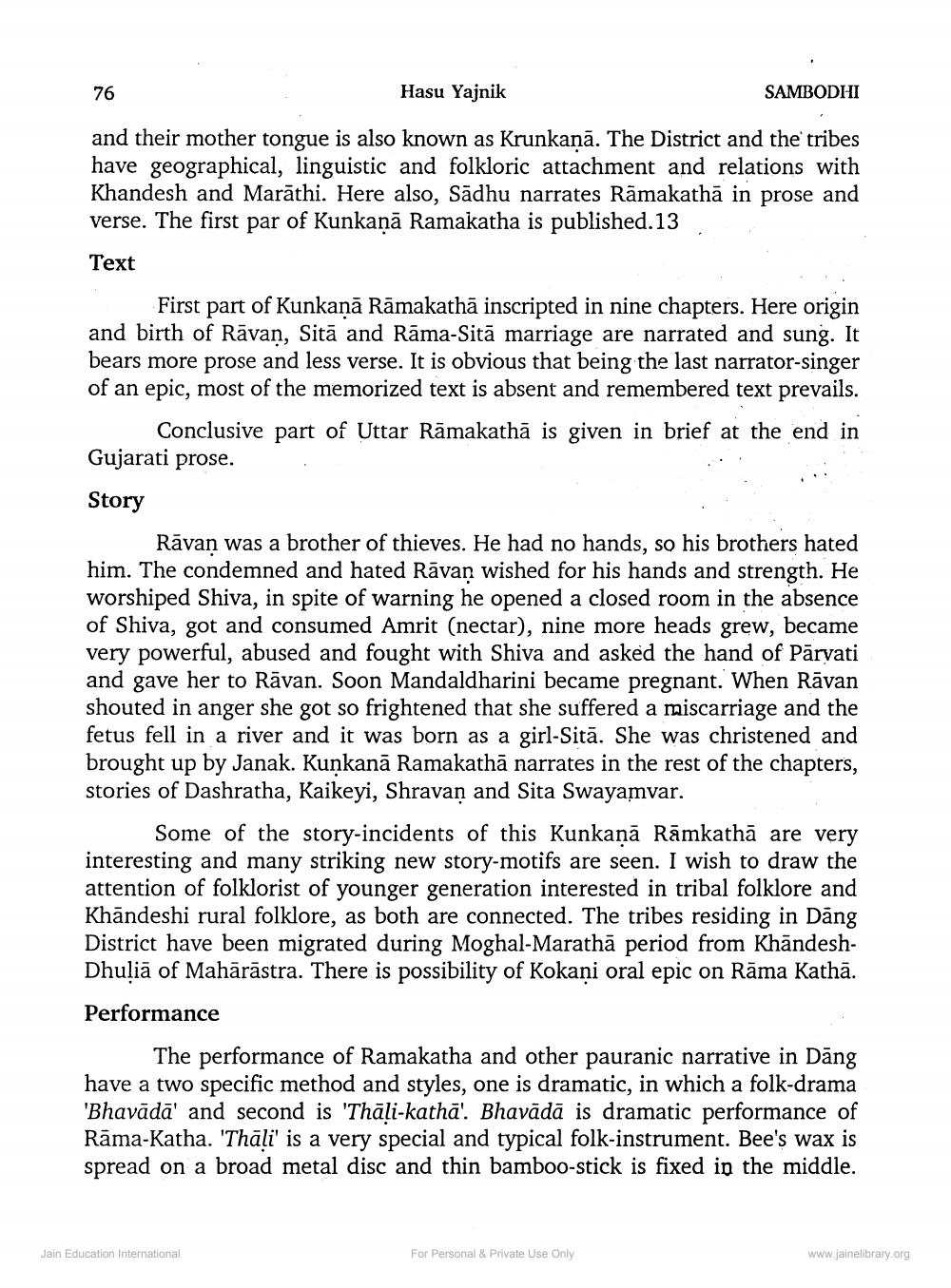________________
76
Hasu Yajnik
SAMBODHI
and their mother tongue is also known as Krunkanā. The District and the tribes have geographical, linguistic and folkloric attachment and relations with Khandesh and Marāthi. Here also, Sadhu narrates Rāmakathā in prose and verse. The first par of Kunkanā Ramakatha is published.13
Text
First part of Kunkanā Rāmakathā inscripted in nine chapters. Here origin and birth of Rāvan, Sitā and Rāma-Sitā marriage are narrated and sung. It bears more prose and less verse. It is obvious that being the last narrator-singer of an epic, most of the memorized text is absent and remembered text prevails.
Conclusive part of Uttar Rāmakathā is given in brief at the end in Gujarati prose.
Story
Rāvan was a brother of thieves. He had no hands, so his brothers hated him. The condemned and hated Rāvan wished for his hands and strength. He worshiped Shiva, in spite of warning he opened a closed room in the absence of Shiva, got and consumed Amrit (nectar), nine more heads grew, became very powerful, abused and fought with Shiva and asked the hand of Pārvati and gave her to Rāvan. Soon Mandaldharini became pregnant. When Rāvan shouted in anger she got so frightened that she suffered a miscarriage and the fetus fell in a river and it was born as a girl-Sitā. She was christened and brought up by Janak. Kunkanā Ramakathā narrates in the rest of the chapters, stories of Dashratha, Kaikeyi, Shravan and Sita Swayamvar.
Some of the story-incidents of this Kunkanā Rāmkathā are very interesting and many striking new story-motifs are seen. I wish to draw the attention of folklorist of younger generation interested in tribal folklore and Khāndeshi rural folklore, as both are connected. The tribes residing in Dang District have been migrated during Moghal-Marathā period from KhāndeshDhuliā of Mahārāstra. There is possibility of Kokani oral epic on Rāma Kathā.
Performance
The performance of Ramakatha and other pauranic narrative in Dāng have a two specific method and styles, one is dramatic, in which a folk-drama 'Bhavādā' and second is 'Thāli-kathā'. Bhavādā is dramatic performance of Rama-Katha. 'Thāli' is a very special and typical folk-instrument. Bee's wax is spread on a broad metal disc and thin bamboo-stick is fixed in the middle.
Jain Education International
For Personal & Private Use Only
www.jainelibrary.org




